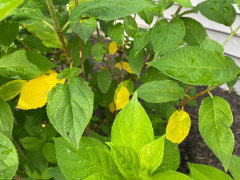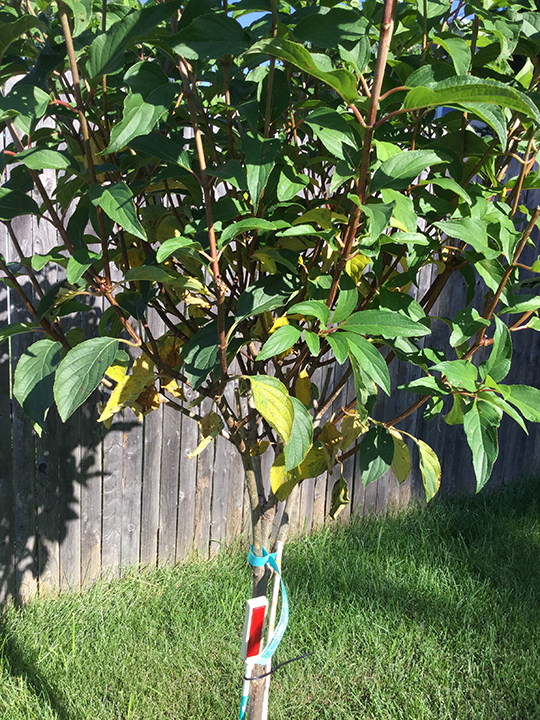Hydrangea Leaves Turning Yellow - Truths
Not known Incorrect Statements About Hydrangea Leaves Turning Yellow
Table of ContentsSome Ideas on Hydrangea Leaves Turning Yellow You Should KnowThe Buzz on Hydrangea Leaves Turning YellowLittle Known Questions About Hydrangea Leaves Turning Yellow.The smart Trick of Hydrangea Leaves Turning Yellow That Nobody is Talking AboutExcitement About Hydrangea Leaves Turning YellowOur Hydrangea Leaves Turning Yellow Statements
You can attempt to stop fungal diseases by keeping your gardens neat and without particles. Offer your yards a good loss and springtime cleanse up and get rid of all ground cover from the ground, along with from within the crown of the plant. These leaves that will linger, waiting to attack in the next growing period.Copper fungicides are, yet if they are overused they can come to be poisonous to your plant. Clip the fallen leaves, and remove them from the garden.
If they aren't obtaining adequate water, their leaves will brown. Hydrangeas have a in the lunchtime sunlight, and recuperating once the sun has moved and the plants have a long time to recuperate. If this takes place repetitively you may observe brown and crunchy fallen leaves that are sagging. This is their means of letting us understand that it needs some extra dampness.

The Facts About Hydrangea Leaves Turning Yellow Revealed
If this is a repeating problem, you possibly require to reconsider your watering timetable. Developed plants may need to be watered one to 3 times per week, relying on your conditions. These hedges will certainly do ideal with one inch of water per week. It might appear appealing to spray the leaves down.
Water the base of the plant,. As soon as the plant has recoiled, you can return to a normal watering timetable.
The container needs to be large enough so the plant can grow and obtain all of the water and nutrients it needs. Panicles like the complete sunlight.
Regardless of the range, strategy in advance and make certain your plant has plenty of protection from the wind. You have a few choices here. You might hair transplant to a brand-new area, or you can create a wind barrier making use of an additional plant, or secure fencing. To develop a wind obstacle you could, or a shrub to block the wind.
Not known Details About Hydrangea Leaves Turning Yellow
Ornamental grass, Rose of Sharon, or Holly shrubs are just a few concepts of plants you could use to obstruct the wind. If you require to transplant, locate a spot in your yard that is well shielded from sun and wind. Transplanting is ideal performed in the fall or the spring.
Every one of the above circumstances could take place to any type of garden enthusiast. Fortunately for everybody, hydrangeas are really resistant, and will certainly probably recoup really swiftly with a little love and care. The plants place is the most crucial factor when it comes to obtaining recognized and correct growth. With a little planning on planting area and appropriate upkeep, you'll be able to guarantee your hydrangeas!.
If Hydrangea leaves turn yellow and falls off later on, it's typically due to overwatering, as the plant can not uptake water and drops Read Full Report the fallen leaves to cut off transpiration. Following this, Hydrangea leaves begin to sag and shrivel. Since both conditions can create yellow fallen leaves, you ought to find the distinction between the overwatered and underwatered plant.
You can rescue the plant from yellow leaves by providing it the appropriate light and placement. If your plant gets yellow leaves, move it to a dark place.
Hydrangea Leaves Turning Yellow Fundamentals Explained
, and temperature alterations can create yellowing fallen leaves and brown places. If it gets too cozy, the edges of the leaves come to be yellow, transform brown and create a crispy texture.
Heavy soil can conveniently obstruct the oxygen supply to the roots and cut the connection with the upper parts of the plant (fallen leaves). Hydrangea leaves change their shade if they find small troubles in the soil make-up. This problem can cause the Hydrangea delegates turn yellow, experience fallen leave declines, and make a droopy plant compatible overwatering.
However, yellow fallen leaves in Hydrangeas are the very first indicators of illness problem, commonly followed by black areas, browning, goes down, and wilting. Isolate the unhealthy or pest-infested plant from the healthy and balanced plants to stop disease spread. If it is a yard plant, get rid of all the infected fallen leaves making use of disinfected tools and clean up all the particles.
Reducing off aids Hydrangea shade unneeded weight and insurance coverage, permitting the development of brand-new fallen leaves. The most effective time to trim Hydrangeas is spring when the plant is prepared to grow vegetation for the following season. Examine for invested or infected leaves and cut the base of a stalk that joins the leaves and stem.
Some Known Questions About Hydrangea Leaves Turning Yellow.
Stay clear of reducing healthy and balanced or environment-friendly fallen leaves, and do not get rid of even more than 25% of the plant's foliage. Collect the discarded delegates shed or compost them. Check This Out The main reason behind the red fallen leaves in Hydrangea is inadequate soil or environmental problems. If Hydrangea fallen leaves have a white fine-grained substance on them, it suggests Powdery Mold infection.
Also, repot the plant annually in springtime or every 2 years if the growth rate is slow-moving.
There are six main reasons this may happen:: The plant does not obtain sufficient sunlight.: The roots are either as well damp or also dry.: The plant is also cold.: The soil is not acidic or alkaline sufficient for the hydrangea.: The plant isn't getting the right nutrients it requires to stay healthy.
Each reason influences the plant in a manner that can be fixed if we recognize how to care for hydrangeas the proper way. When we talk regarding inadequate light for Read Full Article hydrangeas, we indicate that the plant isn't getting adequate sunlight. Hydrangeas prefer brilliant light, yet not direct, scorching sunlight. They typically flourish ideal with morning sunlight and afternoon shade.
Some Known Details About Hydrangea Leaves Turning Yellow
Without enough sunlight, the leaves can turn yellow, the plant can end up being weak, and it may generate fewer blossoms. To ensure a hydrangea receives sufficient light, it ought to be put in a place where it can delight in the morning light and be protected from the extreme afternoon sun. Hydrangea Leaves Turning Yellow. Overwatering is when a hydrangea plant gets more water than it needs

This trouble is usual in the fall as the climate adjustments or if a hydrangea is planted in an area where it does not obtain sufficient warmth from the sun. It is very important to know the best conditions for hydrangeas to avoid low-temperature anxiety. Most hydrangeas expand ideal in areas 6 to 9, where the environment is milder.